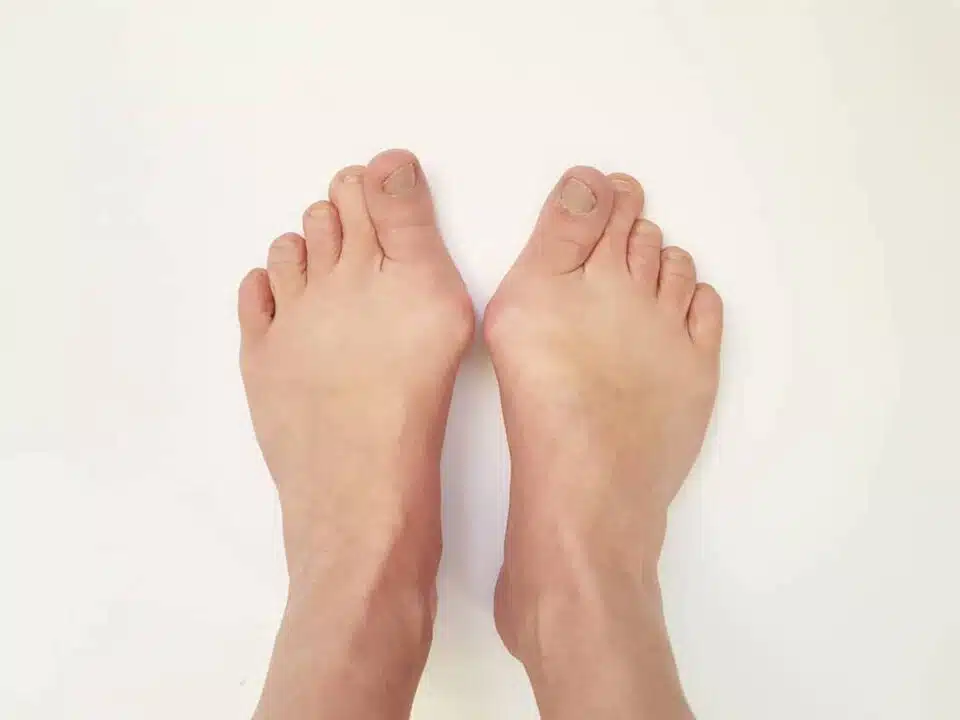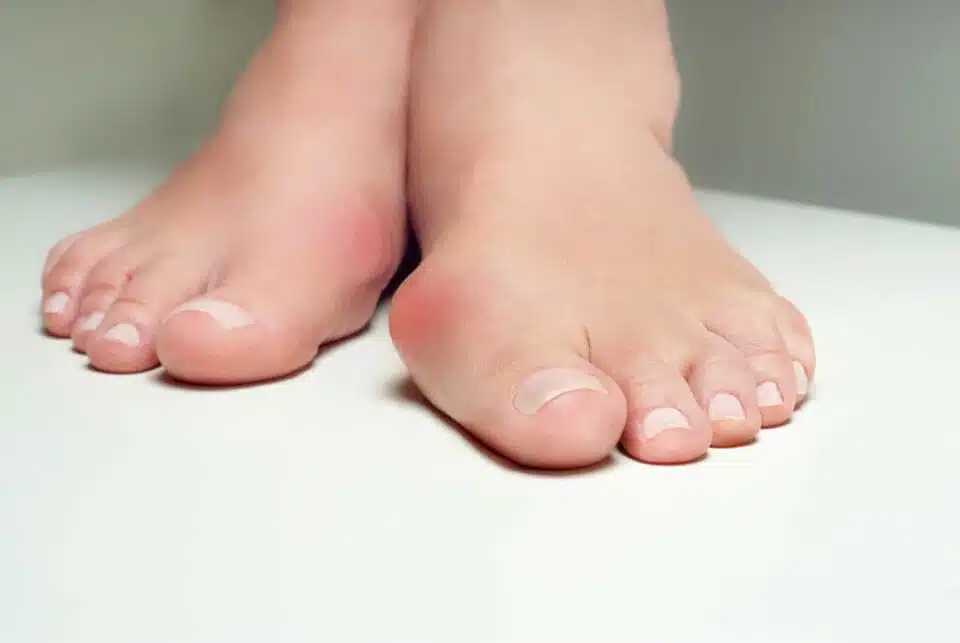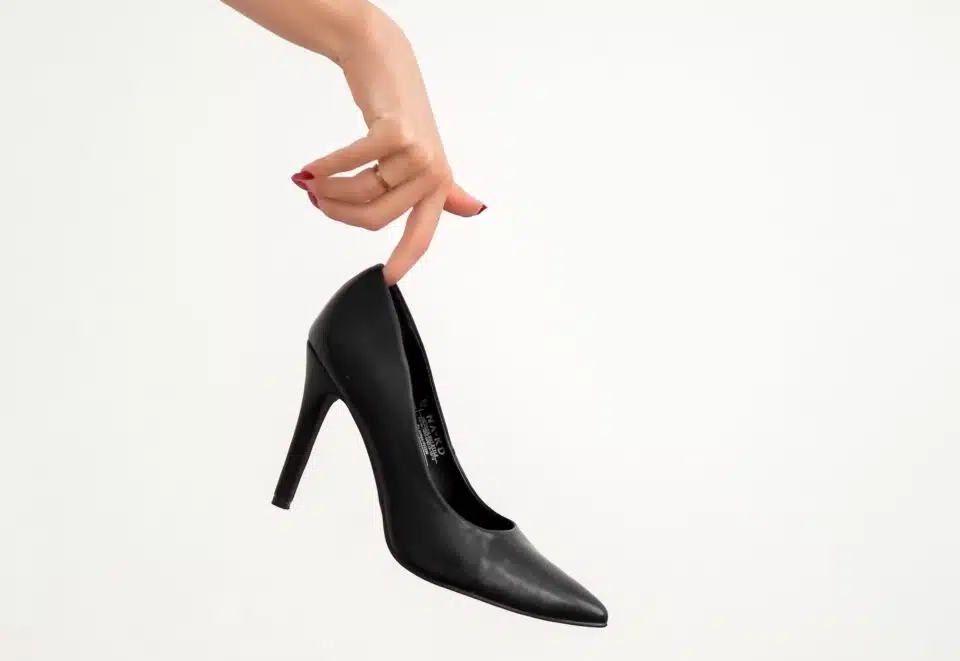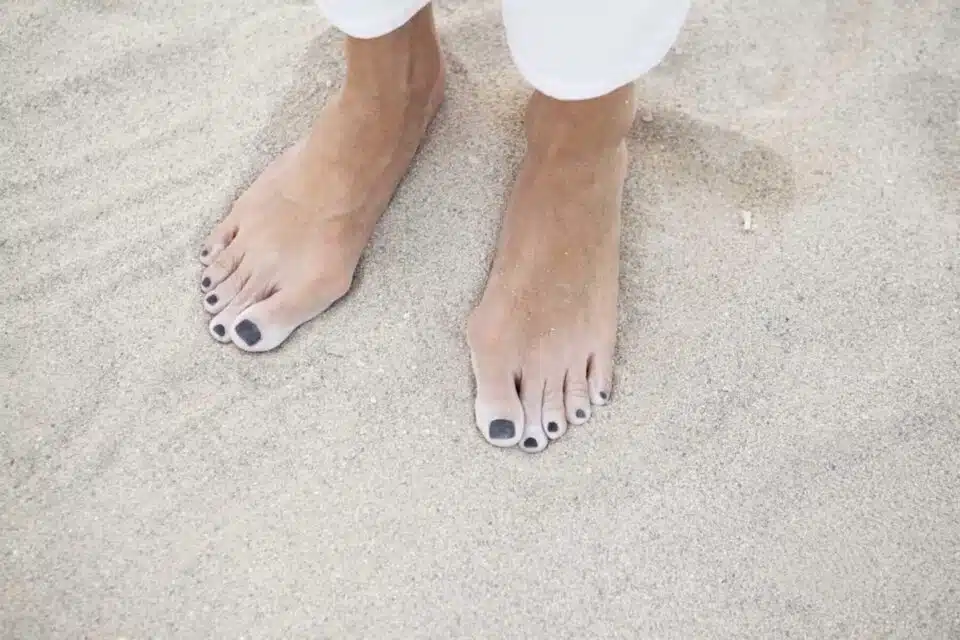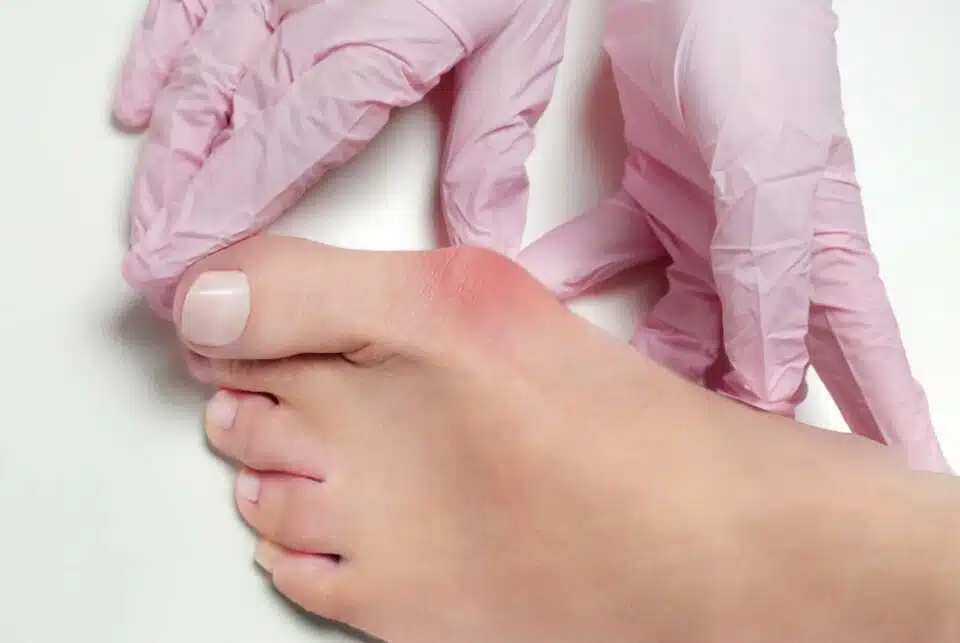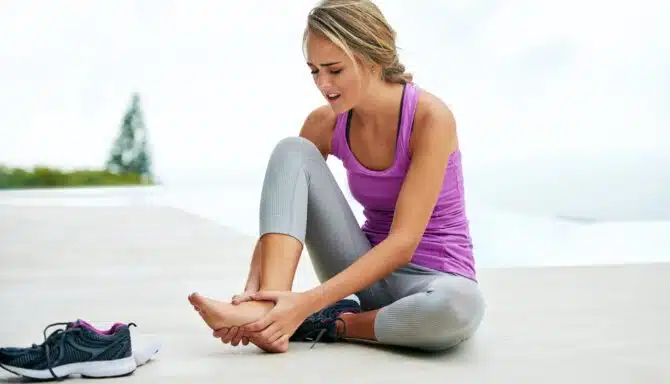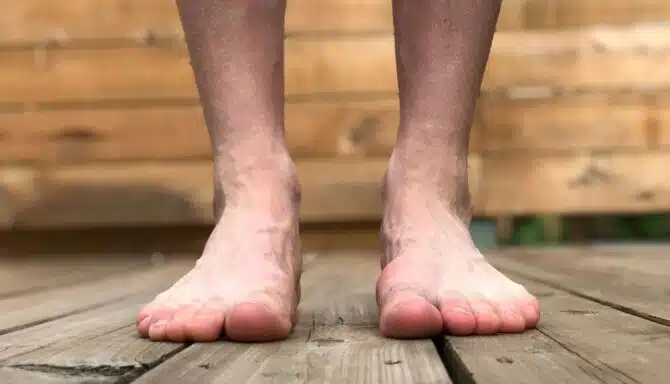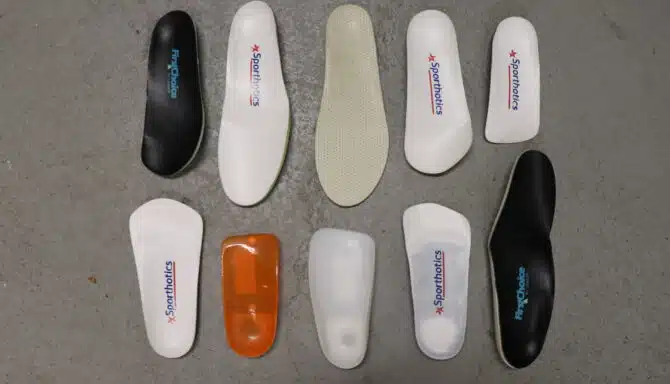Bunions can be a debilitating condition, but there is still plenty of hope to manage it and reduce the pain it causes.
Bunions are joint deformities located at the base of the big toe. You may see bony bumps on the foot’s inner side, which can be painful and uncomfortable. Bunions can also affect the alignment of the foot and cause the big toe to point inward toward the other toes. (They can also exist along the outer edge of the foot at the base of the little toe. These are known as bunionettes.)
Understanding the causes, symptoms, and treatment methods can help spot bunions early and get you back to feeling better soon. Below you’ll find a comprehensive guide to understanding and treating bunions.
Causes of bunions
Various factors, including genetics, foot shape, and footwear, cause bunions. Family history can dictate the likelihood of bunions due to inherited foot shape. People with foot shape abnormalities or imbalances like flat feet, low arches, or loose joints are also at a greater risk of developing bunions as these underlying conditions put more pressure on your big toe and surrounding areas. All of these risk factors are quite common; roughly six percent of Canadians yearly have foot injuries, bunions, and flat feet or fallen arches.
Additionally, external factors like tight or narrow shoes or high heels can squeeze your toes together, which adds pressure and restricts movement across the toes. Over time, your big toe joint may shift, causing it to protrude outwards. Shoes with narrow toes can trigger and catalyze developing bunions, but footwear alone is not solely to blame.
Symptoms of bunions
The most prominent symptoms of bunions are pain and discomfort in your big toe. You may also experience swelling and redness and have a large bony protrusion at the base of your big toe. Due to the outgrowth and irritation, the skin over the bunion may become thickened and callused.
The toe may become rigid and difficult to move in more severe cases. You may also experience difficulty wearing your regular footwear as the protrusion (resulting from your bones shifting) increases your feet’s surface area. The rigidness of the big toe makes the big toe more susceptible to strain and over-exertion. Lack of flexibility further imbalances the weight across your feet and toes. This causes a vicious cycle that can further aggravate the bunion.
Treatment for bunions
Although bunions can be painful, not all hope is lost. You can do plenty to recognize bunions early or treat them via surgical or non-surgical methods to improve your quality of life. Depending on the severity, you can slow the progression of bunions or find ways to manage the discomfort effectively.
The exact treatment typically depends on the severity of the bunions, a person’s lifestyle demands, and their age. Milder cases may be managed and treated with non-surgical treatments, including specific devices, such as bunion splints or custom orthotics, or physical therapy. The more severe cases may require surgery, which in and of itself has its pros and cons.
Non-surgical treatments for bunions
Non-surgical treatment for bunions focuses on limiting further aggravation of the affected joint and slowing the bunion’s progression. This in turn decreases pain and improves quality of life. Such treatments include:
- Alter your footwear: Wear shoes with a wide and deep toe box to reduce pressure on the bunion. Avoid wearing high heels or shoes with pointed toes.
- Use padding and taping: Apply a pad or cushion to the bunion to reduce pressure and protect the skin. Taping can also help to keep the foot in a more natural position. You can also try bunion splints and bunion aligners to properly align the joint as you go about your daily activities.
- Custom-made orthotic inserts or generic inserts like Superfeet may help to redistribute pressure and support the foot. Padding or cushions to protect your feet may also help.
- OTC pain relievers like ibuprofen can help reduce and keep swelling and inflammation at bay.
- Stretching and strengthening exercises can improve the flexibility and strength of the foot and ankle. Strengthening the muscles around the joint also halts the vicious cycle of bunion growth.
- Maintain a healthy weight to prevent sudden impact on your feet and toes.
If non-surgical treatment for bunions hasn’t improved the condition, you can explore surgical treatments, which we dive into below.
Surgical treatments for bunions
More than 100 different types of surgeries for bunions exist. An orthopedic surgeon or podiatrist may perform the surgery, depending on the nature and type of procedure. With surgery, the goal is physically to eliminate the bunion. However, surgical treatments have risks, and a bunion may still return in the future, so you should consult a medical professional. No one surgery is perfect for everyone; it’s highly individual.
Some of the more common surgeries for bunions are:
- Bunionectomy is a surgical procedure in which the bony bump is removed from the joint. The goal is to realign the joint with the rest of the foot to improve the position.
- Osteotomy is a procedure that involves cutting a portion of the bone to improve the toe’s position.
- Arthrodesis (commonly known as joint fusion surgery) is a procedure that adjoins joints together.
- Resection arthroplasty is a procedure that removes the damaged joint. The joint is then rebuilt during the procedure.
- Artificial implant insertion is a procedure where an implant replaces the deformed first metatarsophalangeal (MTP) joint.
